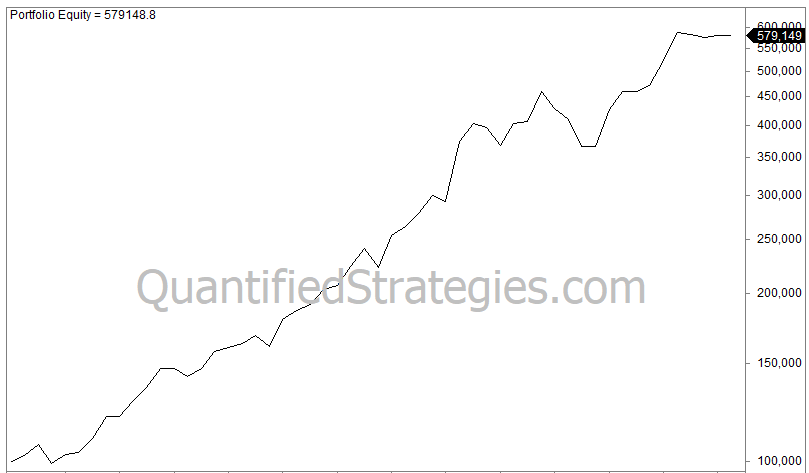This investment strategy is designed for simplicity, requiring only about five minutes of management annually.
Since 2012, it has achieved a compound annual growth rate (CAGR) of 18%, outperforming the Nasdaq. The maximum open drawdown recorded for this strategy has been -28%.
Core Components of the Strategy
The strategy utilizes a portfolio composed of two specific Exchange-Traded Funds (ETFs):
• 67% BTAL: This is an anti-beta ETF that acts as a hedge, aiming to reduce volatility and provides market-neutral, short beta exposure. It tends to rise during market turmoil, helping to cushion downturns.
• 33% TQQQ: This fund offers 3x leveraged exposure to the Nasdaq-100 Index, amplifying returns during bullish market trends. An alternative to TQQQ is QLD, which provides 2x leverage to the Nasdaq 100.
This is the equity curve from 2012 until today (BTAL started trading in late 2011):
The annual return is 18%, and the max drawdown is 28%.
You might want to swap TQQQ with QLD (2x leverage to Nasdaq 100).
Rebalancing for Success
You need an annual rebalance. This step occurs on the first trading day of January each year to restore the portfolio's target weightings. The results from backtesting indicate that rebalancing annually or quarterly does not significantly alter the outcome.
Why This Simple Method Might Deliver
The success of this strategy is rooted in its simplicity and minimal maintenance.
• Reduced Volatility Drag: Unlike frequent rebalancing, which can negatively impact leveraged ETFs like TQQQ, the annual rebalance minimizes trading activity. Leveraged ETFs are susceptible to "volatility decay" or "whipsaws" (sharp, short-term fluctuations), and frequent rebalancing can exacerbate losses.
• Long-Term Trend Alignment: The once-a-year approach allows the portfolio to ride long-term market trends, contributing to higher overall returns.
• Discipline and Patience: The philosophy emphasizes keeping the approach simple, avoiding emotional reactions during market dips, and trusting the system.


